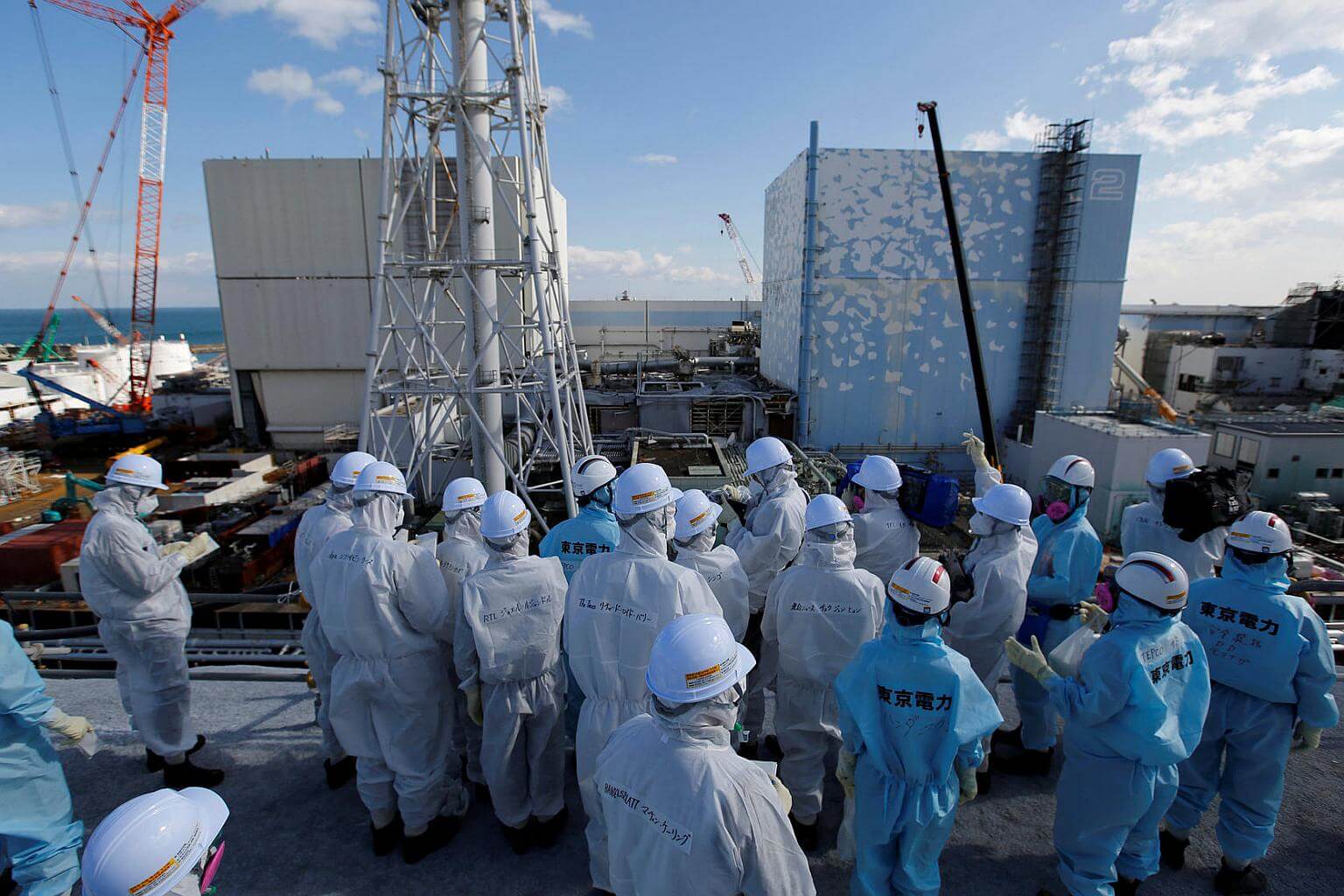Tepco finds possible nuclear fuel debris below Fukushima reactor: Report
Sign up now: Get insights on Asia's fast-moving developments

Members of the media, wearing protective suits and masks, receive briefing from Tepco employees (in blue) in front of the reactor buildings at Tepco's tsunami-crippled Fukushima Daiichi nuclear power plant in Okuma town, Fukushima prefecture, Japan, on Feb 10, 2016.
PHOTO: REUTERS
Follow topic:
TOKYO (REUTERS) - Tokyo Electric Power (Tepco), the operator of Japan's wrecked Fukushima nuclear plant, has found possible nuclear fuel debris below the damaged No. 2 reactor, one of three that had meltdowns in the 2011 disaster, public broadcaster NHK reported on Monday (Jan 30).
Should the finding be confirmed, it would mark a significant breakthrough in attempts to clean up the nuclear plant, after years of delays, missteps and leaks of radioactive water.
Finding the highly radioactive melted uranium rods may pave the way for Tepco to develop methods to remove the melted fuel.
Tepco detected a black lump of material directly below the reactor in an inspection by camera on Monday morning but cannot yet confirm what it is, a spokesman told Reuters.
The utility will announce its assessment of the material at a news conference at 6.30pm local time (5.30 pm Singapore) on Monday.
In the world's worst nuclear calamity since Chernobyl in 1986, three reactors at Tepco's Fukushima plant melted down after a magnitude 9 earthquake struck off the coast of Japan in March 2011, triggering a tsunami that devastated a large area and killed more than 15,000 people.
About 160,000 people fled their homes after the meltdowns caused explosions that dumped radioactive materials across a swath of Fukushima prefecture. Many of the people are unlikely to return.
It took Tepco about two months to admit the reactors had melted down, confirming what experts had been saying for weeks.
Tepco has made some progress, such as removing hundreds of spent fuel rods in one of the damaged buildings. But it has failed to establish the location of the melted fuel rods in the other three damaged reactors at the plant.
The utility has been developing robots that can swim under water and negotiate obstacles in damaged tunnels and piping to search for the melted fuel rods.
But as soon as the robots get close to the reactors, the radiation destroys their wiring and renders them useless.
In December, Japan's government nearly doubled its projections for costs related to the Fukushima nuclear disaster to 21.5 trillion yen (S$268.3 billion), increasing pressure on Tepco to step up reforms and improve its performance.
Plans to remove spent nuclear fuel located high in the damaged building of the No. 3 reactor have been delayed again, the Nikkei business daily reported on Thursday.

